Emma Jameson – 3 July, 2014
“This Home is Occupied” exemplifies the potential of the exhibition space to effectively communicate messages and themes, be they artistic, social, or political. In a contemporary art context in which the local is generally overwhelmed by the global and acquiescence is preferred over critique, Sugawa and McPherson-Newton's exhibition is a refreshingly direct expose and critique of social issues that permeate the society in which we live
The communicative potential of the gallery space is methodically explored by Sakiko Sugawa in This Home is Occupied in Gallery One of St Paul St Gallery at AUT. In a contemporary art context in which the complexity of local issues and identity are to a certain extent being ignored in favour of universal themes in an increasingly globalised society, Sakiko Sugawa refreshingly reasserts the presence of the local, social and contemporary at the forefront of the visitor’s imagination. Closely associated with active members of the Tamaki Housing Group, Sugawa (in collaboration with Ella Grace McPherson-Newton) addresses an issue to which she is closely personally aligned, and also one that is of key concern as large cities like Auckland grow exponentially: the unaffordability and lack of social housing and the subsequent fragmentation of communities.
In its presentation of informative documentaries, archival material, and distribution of informative pamphlets, This Home is Occupied explores ways in which the traditional concept of a ‘museum’ or ‘gallery’ can be adapted so as to not only passively inform the viewer, but also activate social awareness and participation. When in conversation, Sugawa speaks of her concern about communicating a message that extends beyond the temporary or aesthetic exhibition experience. She acknowledges that in most cases, people tend to engage with issues solely within the gallery space and fail to incorporate this awareness within the fabric of their daily consciousness. The provision of take-home pamphlets and placards are an attempt to remedy this situation. Documents such as “Frequently Asked Questions About State Housing in New Zealand” and “Resist the Evictions” not only provide the viewer with extensive contextual information about the issues of social housing but also encourage them to utilise this information in community engagement and to “Join the Resistance!” While Sugawa acknowledges that these incitements to act possibly have a limited effect, the exhibition, for her, acts as a support mechanism for social housing tenants and activists, visually proclaiming allegiance with their cause and encouraging others to do the same. As such, Sugawa sees herself as a ‘cultural walker’, accompanying activists and tenants in their struggle for social awareness, understanding, and action, thus remedying the void of adequate and accurate media representation.
Sugawa’s refutation of the term ‘artist’ is reflected in the exhibition’s emphasis on the informative, rather than on the aesthetic. A sparsely decorated room, the exhibition area almost seems like a seminar room or a community activist space: upon entering, the visitor encounters a long table at the far end of the space, upon which are placed the educational pamphlets and the take-home placards. A computer is also available for the public to undergo further research. A historical timeline on the wall immediately behind this table enables the visitor to place the general thematic issues raised in the pamphlets within a temporal framework from 1905-2014 and the specific events within this chronological schema also serve as evidence for these overarching themes.
It is through this dual functionality of the timeline to simultaneously point to specific events and suggest general thematic trends relating to the privatisation and marginalisation of social housing concerns that the exhibition is empowered and rendered effective. While evidently political in subject matter, this social reference is politically neutral: a general treatise on social inequality throughout different epochs. The side wall displays an image from the Bastion Point protests and alongside this are posters from both the National and Labour parties, each proclaiming their dedication to the social housing cause: “Labour guarantees security of tenure as long as you live”, “New Zealand National Party: 16,400 new homes built; a record of achievement. We promised more homes; they have been built”. Although dates are provided for these posters within the exhibition guide, the absence of accompanying wall texts render these posters timelessly ironic in their romanticised idealism. Placed to the side of the table and the timeline, the average visitor will presumably have read information about the socio-historical context before viewing these images. The careful planning of the gallery space thus serves to expose the falsity of their propagandistic messages, prompting the viewer to critically engage with how politically persuasive messages are woven into contemporary media to carefully stage and manipulate public opinion.
This viewing experience is accompanied by the continuous soundtrack of the video at the far end of the gallery space, which shows the effects of housing privatisation on a community. A community has gathered to say a “quiet, peaceful farewell” to a house that has been in the occupant’s family for four generations and is now being taken away. We are thus shown the real effects of privatisation, gentrification, and increasing market rents on a local community and its inhabitants. ‘State housing’ can easily become an abstract concept that is impersonally bandied around in the media, with little thought for the reality for the people for whom this is home. The tenants are often reduced to generic stereotypes in public perception and as such, their individual rights are often ignored and they have to constantly prove their ‘eligibility’ to be part of the community. This video serves to readdress this. We are shown the people who are involved in the social housing movement in Glen Innes (as tenants or activists) and are thus provided faces with which we can identify. Such an emphasis on the personal impact of political policies on communities is corroborated in the photographic montage to the side of this video, which shows a stream of images that consecutively show houses, then bare land, or the appearance a ‘for sale’ sign in the front yard. The constant stream of such photographs indicates that this process is on going, relentlessly affecting families like those seen in the video.
This is a marked difference to the idyllic images of a rugby game and children playing in front of a house that are shown in the ‘Housing in New Zealand’ video from 1945-1946 that plays on a small screen at the opposite end of the exhibition space. Sugawa and McPherson-Newton’s placement of this television directly opposite the larger screen serves to place the two video media in a dynamic, interpretive relationship with each other: the smaller screen shows a government’s self-reassuring idealised notion of ‘a caring community’, while the larger screen underscores a marked lack of community consideration and engagement. The soundtrack of the video escalates from being quiet and contemplative to eventually enveloping the room with the sounds of protests and police violence, providing a viewing context that speaks of struggle, anguish, but also community action. Quotations from the 1945 film (for example, “our country may be small but we will continue to build houses…. Ensuring a healthy, happy family life for every person in New Zealand”) are thus drowned out by the sounds of these protests, serving as an audio metaphor for the overwhelming presence of a reality that exists in spite of (and possibly because of) these romanticised claims of community support.
It is through the careful positioning of various elements within the gallery space that Sugawa and McPherson-Newton invest the exhibition with an informative narrative that is overtly political, yet subtly poignant in its complexity. While Sugawa stresses that the exhibition’s aim is not centred on the aesthetic, her interest in how the visual arts can be employed to support activist causes is evident in the way in which she has skilfully placed audio, visual and written media to create a visual experience that is powerfully and comprehensibly communicative. The components of the exhibition aid the visitor in gaining understanding of general thematic concerns, yet also speak of more subtle narrative nuances. The tivaevae patterns on the couches in front of the large screen not only bring a vibrancy of colour to the otherwise stark exhibition, but also visually complement events on the timeline on the wall opposite, specifically the 1975 entry that states “Muldoon elected, blames economic crisis on Pacific Community.” ‘Social housing’ is thus not made an abstract, blanket concept, but rather a complex social concern into which issues of racism, poverty and prejudice are interwoven and implicated.
This Home is Occupied exemplifies the potential of the exhibition space to effectively communicate messages and themes, be they artistic, social, or political. In a contemporary art context in which the local is generally overwhelmed by the global and acquiescence is preferred over critique, Sugawa and McPherson-Newton’s exhibition is a refreshingly direct expose and critique of social issues that permeate the society in which we live. In taking a ‘non frills’ approach to display, this exhibition by no means commodifies or exploits themes to generate sensationalist interest, but rather presents social issues for examination, critique, and deliberation. Some visitors may leave feeling inspired to join groups like the Tamaki Housing Group, while some may return to a state of social apathy. Yet in raising awareness of issues that tend to be brushed aside, Sugawa and McPherson-Newton prompt visitors to accompany them in their plight and establish a support network that is fostered by compassion and understanding.
Emma Jameson is the 2014 EyeContact Artists Alliance Writing Intern, a programme made possible with generous funding from the ASB Community Trust.
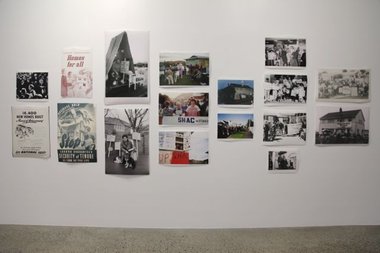
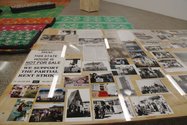
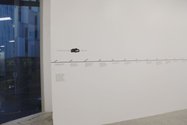



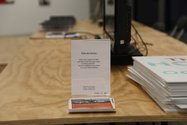
 Advertising in this column
Advertising in this column Two Rooms presents a program of residencies and projects
Two Rooms presents a program of residencies and projects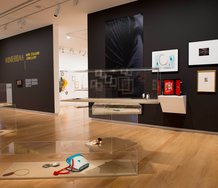
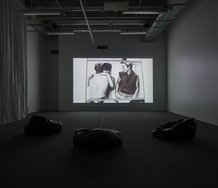


This Discussion has 0 comments.
Comment
Participate
Register to Participate.
Sign in
Sign in to an existing account.